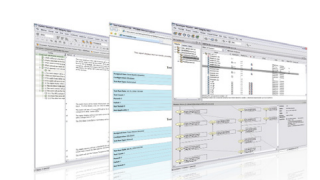 Industry research shows that the root cause of 56% of all errors identified in products and engineering projects are introduced in the requirements phase. So, it’s better to get it right the first time. Mechanical, electrical, and software design is driven by accurate product requirements. However, poor communication of requirements to and across all engineering disciplines are documented to be costly and time consuming:
Industry research shows that the root cause of 56% of all errors identified in products and engineering projects are introduced in the requirements phase. So, it’s better to get it right the first time. Mechanical, electrical, and software design is driven by accurate product requirements. However, poor communication of requirements to and across all engineering disciplines are documented to be costly and time consuming:
- Today 20% of development costs are associated with rework caused by requirements errors, this is preventable rework (Software Engineering Institute)
- Best in class companies achieve a 15 % increase in profit by effectively addressing the challenges of changing requirements (Aberdeen, Oct 2011)
Why are requirements important to engineering processes?
Requirements are ubiquitous and increasingly complex. To deliver high quality products, requirements need to be captured, communicated, and managed across many dimensions. This includes customer needs, cost parameters, quality objectives, regulatory constraints, manufacturing demands, and even service requirements.
Requirements are the foundation of a product development process. They are both shared upstream with customers, those that are receiving the end results of those requirements and, of course, downstream with the different engineering disciplines. Way too often those requirements are locked up in documents.
Typically organisations have used document management type approaches for requirements, as opposed to really treating them as building blocks of an engineering process. Discreet requirements, requirements that are managed separately, requirements that are shared across different products, requirements that are really the nexus, the genesis for re-use in their development processes.
How are organisations struggling to manage requirements?
You may be experiencing the realities of requirements engineering today. Requirements are fractured across word documents, Excel spreadsheets, sticky notes. They are stored all over hard drives, network shared drives, and more. They are shared inconsistently across team members and engineering disciplines inside and outside of the organization. Even when requirements tools are used, they are typically disconnected from the rest of the product development process. Given this complexity, many engineering organisations across industries struggle to manage requirements, which leads to:
- Costly rework
- Delayed time to market
- Unpredictable and inconsistent delivery
- Poor customer satisfaction
What do these realities mean for engineering teams today?
This situation leads to inaccurate requirements, limited visibility, insufficient traceability, poor control, and it also means teams cannot reuse requirements. A winning requirements engineering solution needs to enable authoring of rich text and graphical requirements, including Capture and Import for Microsoft Excel and Word. It should be integrated with the entire product lifecycle, support branching and reuse of requirements, and have a comprehensive workflow engine and an open architecture.
PTC Integrity takes requirements engineering head on. Integrity treats requirements as discreet engineering artifacts, each with their own workflow, allows sharing of requirements across projects, allows requirements to be documented either simply or in complex models, and provides the traceability of those requirements, not just between different projects but downstream to the engineering artifacts that meet those requirements.
Requirements Engineering uniquely delivers value to your product development process. Engineers can see requirements as they are authored, including all attributes. Requirements are consistently traced to product information, and changes can be consistently managed. Requirements can be reused within projects and across projects. In addition, Requirements Engineering enables you to take a tangible value added step towards a comprehensive systems engineering approach.
By integrating the deep requirements capabilities of Integrity with PLM capabilities provided with Windchill, you can trace those requirements all the way down to the physical components, the bills, and material that actually implement those requirements. Between Integrity and Windchill, we're now able to map out that entire network of information that's critical, not just for understanding how a single product's being built, but for really driving systematic reuse across an entire portfolio of products.
By connecting that network we give them that full visibility of the impact of change. That single source of truth goes across requirements and all of the downstream artifacts, and we're providing solutions that ensure that it is a single source of truth, that change can occur across an entire network of information without our customers having to worry about duplicating data or where data might be mastered.
Find out more about the advantages of PLM and Requirements Engineering by downloading the ROI of Product Lifecycle Mangagement research report
